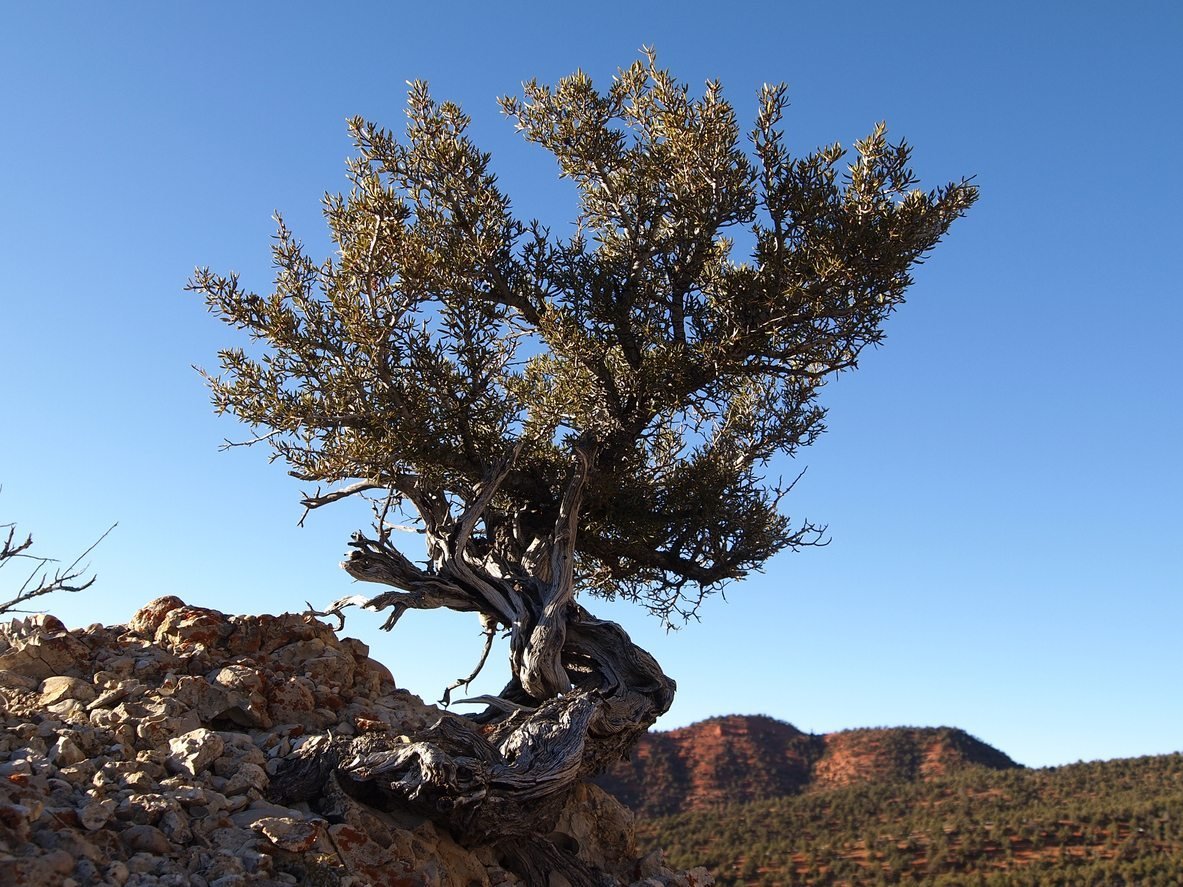An Evergreen Bridge
Curl-leaf Mountain Mahogany (Cercocarpus ledifolius)
Curl-leaf Mountain Mahogany is found in every county in Utah, so it's not surprising to see it shooting from the red soil here in Castle Valley. The red soil underneath it and the red of Castleton Tower looming over is bridged by the mahogany’s feral uncultivated limbs, its chaotic reach being one of the few links of green that extends from the soil to the towers. Cercocarpus ledifolius likes it best that way, with little competition aside from herbaceous plants and grasses immediately surrounding it. It could thrive without those low lying partners as well, as it does on the southernly slopes of many exposed ridgelines, but at 270 Pope Lane, its immediate radius is filled with forbs. Other woody plants aren’t far, but were they closer, Cercocarpus might not be thriving as it is now, curled leaves like miniature spear blades shooting off of every available nodule, the majority aimed at the sun in the southern sky.
At higher elevation, the overstory of the aspen is turning brilliant, shades of bright green and gold lit by flashes as the sun pokes through hovering mist. Closer to the clouds, groves of curl-leaf refuse to turn. They’re evergreen, and while the aspen struggle to repopulate through the hordes of ungulates underneath them and lack forage in the winter, Cercocarpus ledifolius endures browsing throughout the year, providing forage when the deciduous sources are gone and the forbs are covered in snow. Curl-leaf also struggles to repopulate through browsing pressure, but on 270 Pope, the mahogany sees far less of that browsing. Without as strong of a natural pruning pressure, the low tree takes on a shrub’s demeanor, extending every which way, limbs mishap and uncultivated. The specimen itself, however, is not. In a functioning stand of curl-leaf, propagation spirals from seed, its striking, curly-tailed fruits providing hope after mortality. There’s not much to kill it here on this property in Castle Valley, and not much to cull its growth either. No fire, little browsing, and nothing around to shade it out. Its plight in grazed areas is a lack of new growth, yet its lifespan leaves Curl-leafs’ prosperity dependent not on aging out, like aspen, but on stand level disturbance, such as fire.
Cercocarpus ledifolius may have been shaking when lightning ignited cheatgrass just a few acres away, but the low-fuel area around the home on 270 Pope lent it a relatively safe haven. Unlike its closest relation, True mountain mahogany, curl-leaf rarely survives fire. Stand replacing events are the norm in the fire regime, but given its acceptance of poor, well-drained soils, stands often grow in areas of little fuel. It isn’t totally foreign then to longevity like it may see on 270 Pope. Cercocarpus ledifolius is one of the longest lived flowering plants, its millenia of life putting the comparative life of the two small houses on 270 Pope in doubt, and possibly reaching beyond the limit of the parcel, as the property lines and fences fade with time. Having originated in a local nursery, it had none of the struggles of competition in early stages, yet its deep roots have reached far into the deposits of alluvium here, fixing nitrogen, cementing its role and place in this corner of Castle Valley. Its leaves curl over at the edges, feigning wilt, yet persisting through the extremes of drought that have passed and will inevitably continue. Given more seasons, this Cercocarpus ledifolius in old age might lead to a multi-age stand, restoring its native presence and role at a greater scale.
By River Woodruff


